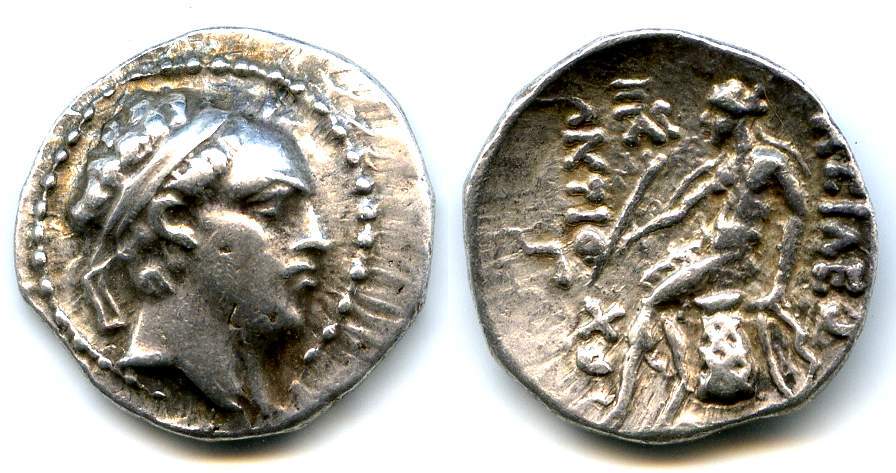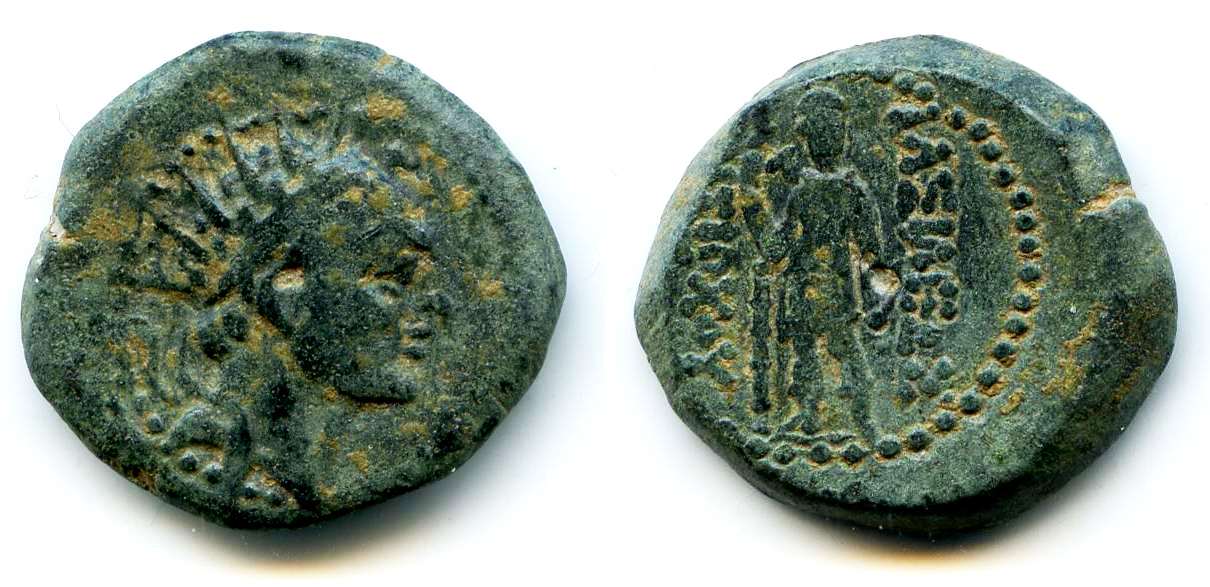Antiochus IV Epiphanes
Born c. 215 B.C., Seleucid King 175-164 B.C.

Silver tetradrachm (4-drachm piece) of Antiochus IV. 30 mm.
O: Head of Antiochus IV facing right.
R: Zeus enthroned, legend in Greek.
This coin was cut in ancient times, by someone who wanted to confirm that it
was solid silver. This is commonly seen with ancient silver coins.

Silver drachm of Antiochus IV. 17 mm.
O: Head of Antiochus IV facing right.
R: Apollo seated on Omphalos, testing arrow, legend in Greek.

Copper coin of Antiochus IV. 17 mm. Mint uncertain but probably Ake
Ptolemais.
O: Head of Antiochus IV facing right, with radiate crown.
R: Artemis standing with torch and bow, legend in Greek.
Antiochus IV was the Seleucid king whose attempts to introduce pagan rites in Jerusalem led to the revolt of the Maccabees and the creation of a Jewish state. The son of Antiochus III, he had to defeat the usurper Heliodorus before taking power in 175. In 171 he invaded Egypt, but he was later driven out by the Romans. Antiochus also campaigned against the Parthians.
The Maccabees were a family of priests from a village near Jerusalem who, in 168 BC, instigated an uprising to defend Judaism against both the Seleucids and Hellenizing Jews. The uprising began when the aged Mattathias killed an apostate Jew who was about to offer sacrifice to Zeus on an altar set up by Antiochus IV in the Temple precincts at Jerusalem. Mattathias's five sons carried on the uprising, including Judas ("Judah the Maccabee"). Judas won several victories over Syrian armies and, in 164 BC, occupied the Temple in Jerusalem, building a new altar and fortifying the area. This remarkable event continues to be celebrated as Hanukkah.
The revolt of the Maccabees gave rise to a Jewish state, which was ruled by descendants of the Maccabees (the Hasmonean Dynasty) until 37 BC. Judah the Maccabee did not strike coins; the first Hasmonean to do so was Alexander Jannaeus, his great nephew.